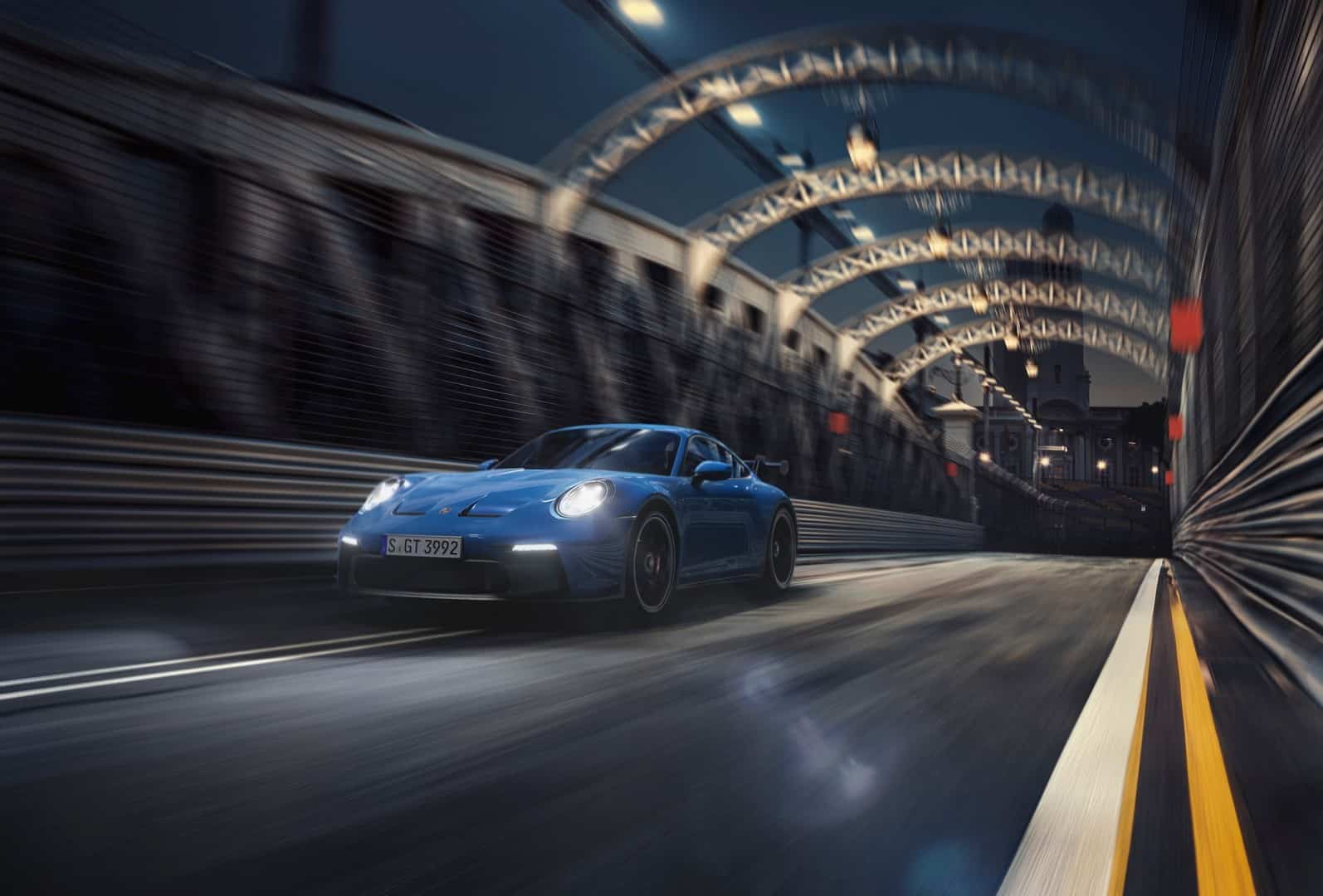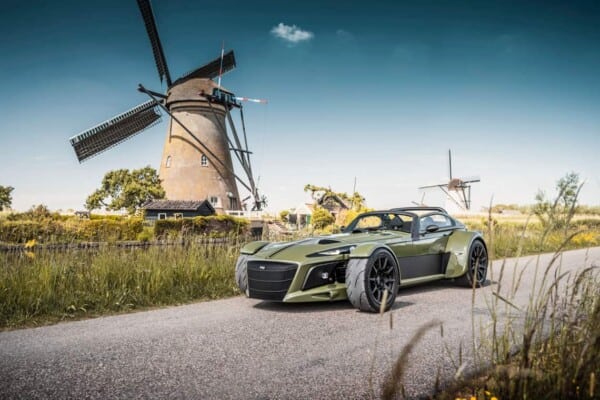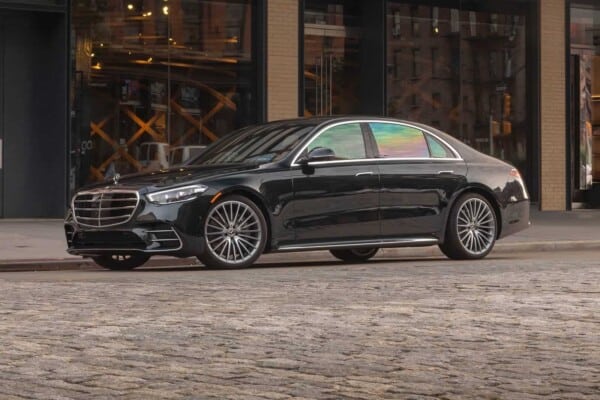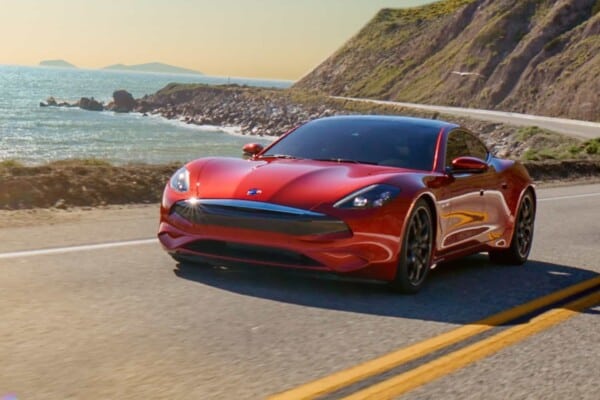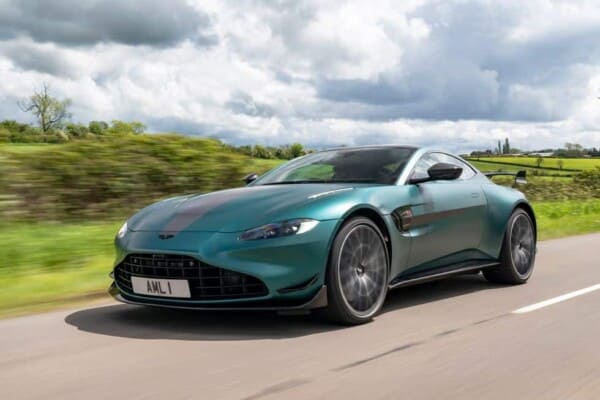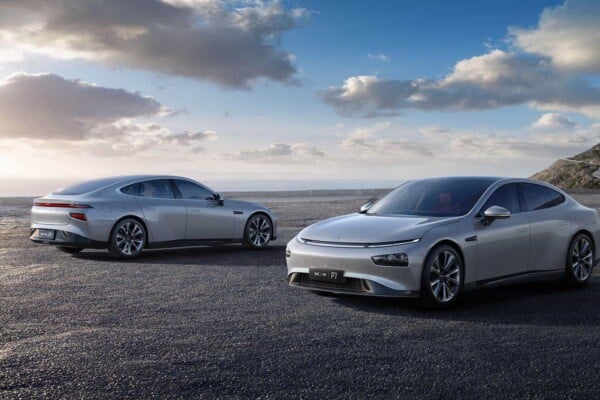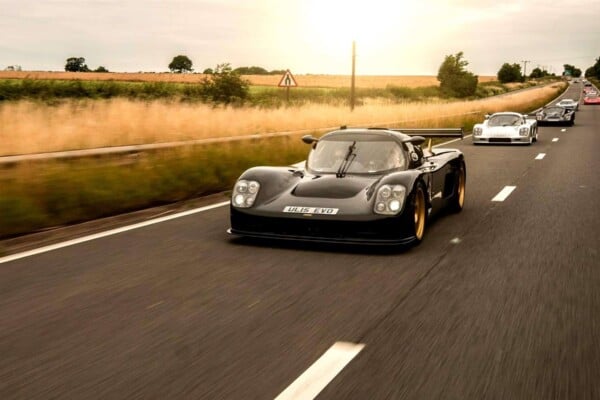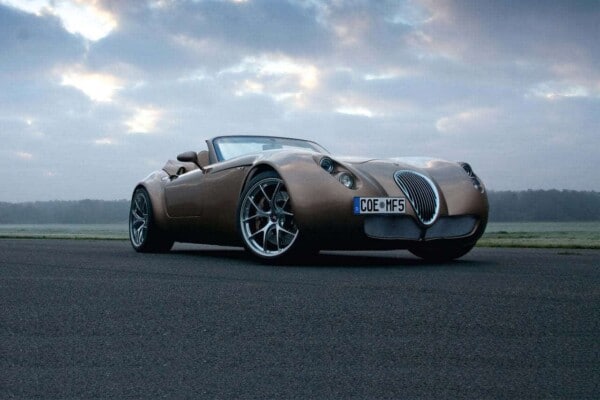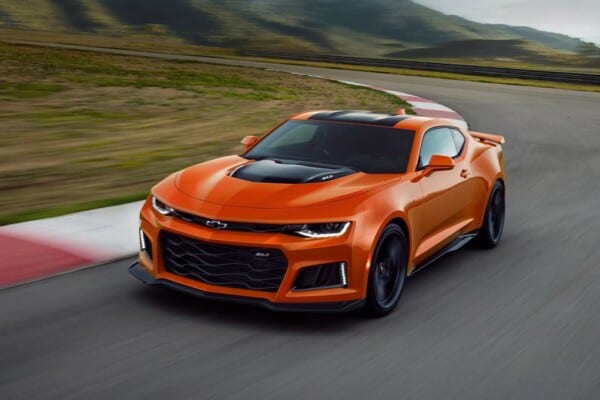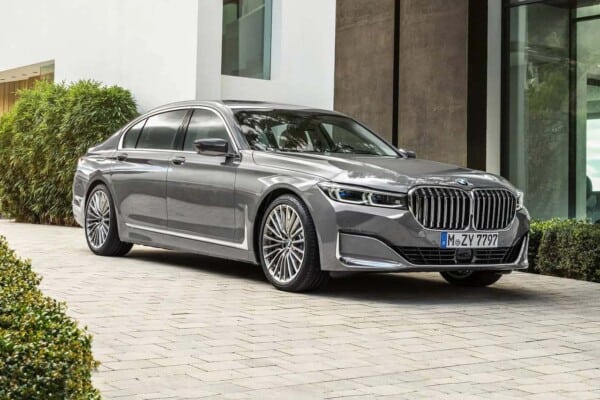Be honest with me: how many car brands starting with the letter ‘P’ can you name? Are they European or not? Are there any supercars in that list? Classic cars? How about trucks? The world of automotive creations is filled with cool stories and hidden gems worth finding out about.
We’ve listed various other car manufacturers on Global Cars Brands, and today it’s time to put some pressure on it and go for a detailed approach. Are you ready to see which are the most important car brands that start with P? Let’s do that right now.
Porsche
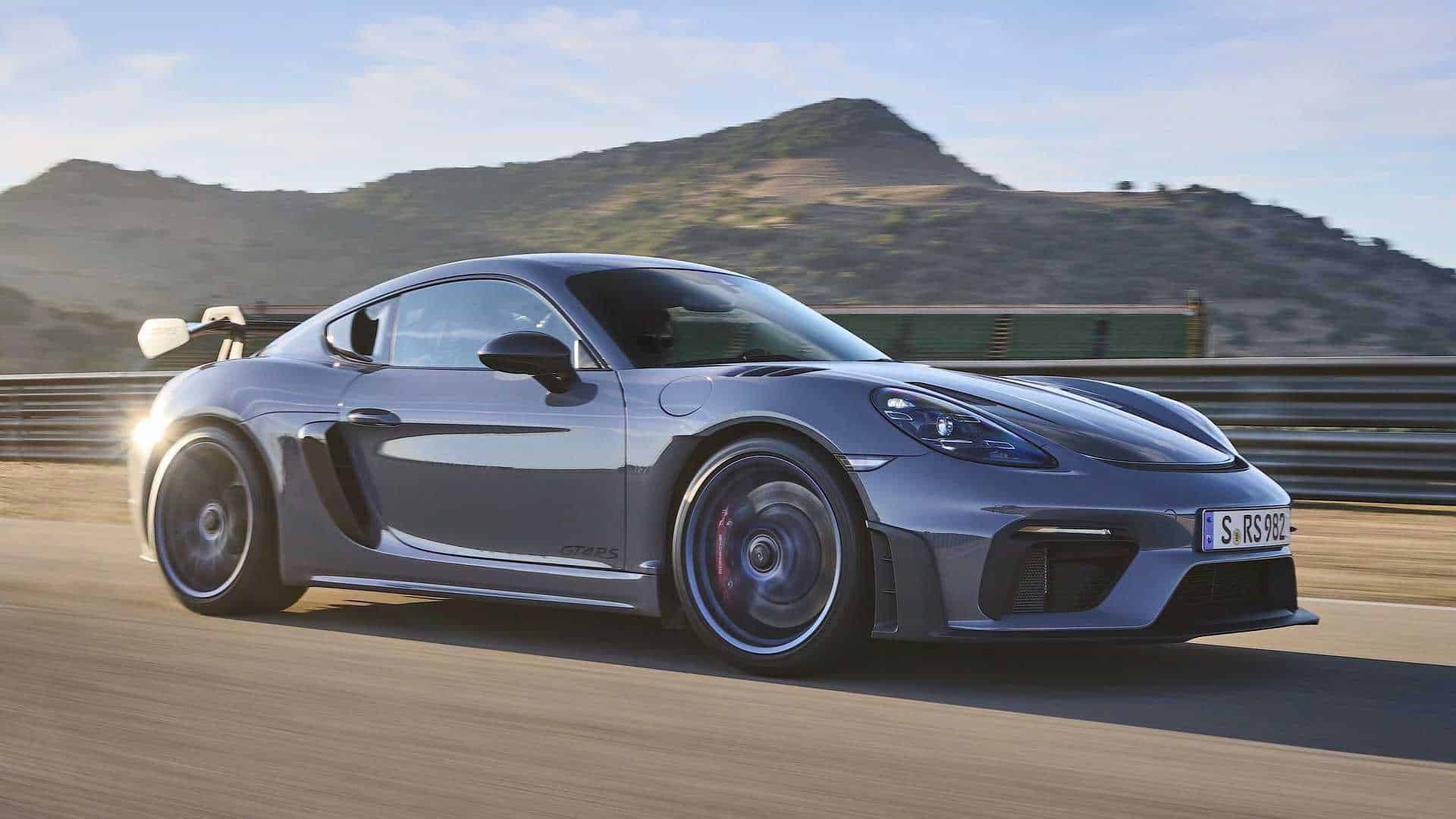
You might have heard about Porsche already and the brilliant man behind this iconic car brand. Ferdinand Porsche founded the renowned Stuttgart-based automotive company in 1931.
Initially, the company offered motor vehicle development work and consulting, and created their first car design when approached by the German government to design a car for the people – this is how Volkswagen was born, the very same giant that owns Porsche these days. The resulting Volkswagen Beetle became one of the most successful car designs of all time, no one can deny that.
Meanwhile, Porsche has always been focused on high-performance and luxury sports cars, although SUVs and premium sedans came to be later. Porsche’s current lineup includes the 718, the powerful 911, Panamera, Macan, Cayenne, and Taycan models.
During World War II, Volkswagen went on to develop a military version of the Volkswagen Beetle, the Kübelwagen, and Schwimmwagen.
By the end of the war, the Volkswagen factory at KdF-Stadt fell to the British and Ferdinand lost his position as chairman of the board. While imprisoned, Ferdinand’s son realized it was all about survival, and the 356 models were created. That car quickly became a success and it was road certified in 1948.
The rest is history, with more and more successful models reaching the automotive market: the 911, Targa, Carrera RS, and so on. Feel free to pick your favorite and tell us why.
The company has been highly successful in recent times and indeed claims to have the highest profit per unit sold of any car company in the world. Moreover, a few months back, Porsche had confirmed that a production plant in Malaysia, the first country outside of Europe, will be set up. Porsche is going places.
Peugeot
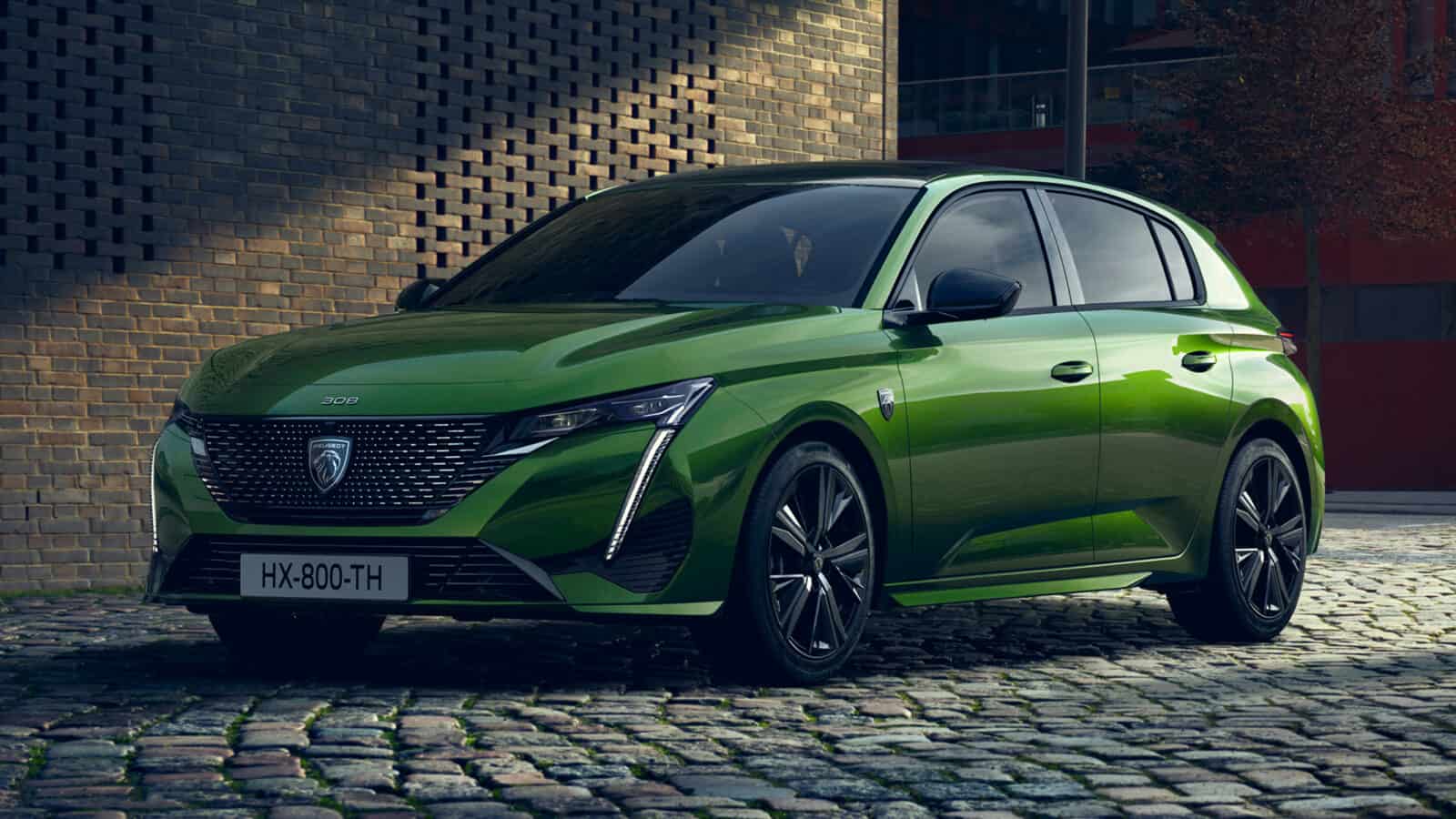
Sometime around 1896, Armand Peugeot made history by venturing in the car business, following his success with a bicycle manufacturing shop at the end of the 19th century. Based in Paris, Avenue de la Grande Armée, the brand ended up being a major French car manufacturer ever since and the second-largest automaker in Europe, after Volkswagen.
Armand Peugeot built the company’s first car steam tricycle in 1889, and the following year an internal combustion car was developed – powered by a Panhard-Daimler engine. Could we say more to impress you? Let’s see.
Peugeot has been involved successfully in motorsport for quite some time, and their racing division has won the World Rally Championship numerous times, the Dakar Rally, the 24 Hours of Le Mans, the World Endurance Championship, and the Intercontinental Le Mans Cup.
Aside from establishing a dominating position in motorsport, Peugeot has received many international awards for its vehicles, including six European Car of the Year awards. There’s no one who can ignore this company.
Pontiac

Based in Detroit, Michigan, the birthplace of American muscle and roaring engines, Pontiac was founded in 1926. Although now defunct, as production has ended in 2010, Pontiac remains a registered and active trademark of General Motors, and who knows, maybe one day they might decide to bring it back to life.
The last Pontiac-badged cars were built in December 2009, with one final vehicle in January 2010. By then, the world was already impressed by some of the most outrageous and loud car models ever created.
Sure, kids growing in the 1980s were seduced by K.I.T.T. and its overall dark appearance, not to mention its futuristic gadgets for that era, but their fathers had grown during the 1970s when muscle cars ruled the world.
Pontiac had made a name for itself in that period, not only with the Firebird models, but also the Bonneville, the GTO, and more. You should be so lucky to drive one of those classics and tell your friends about it.
Pagani
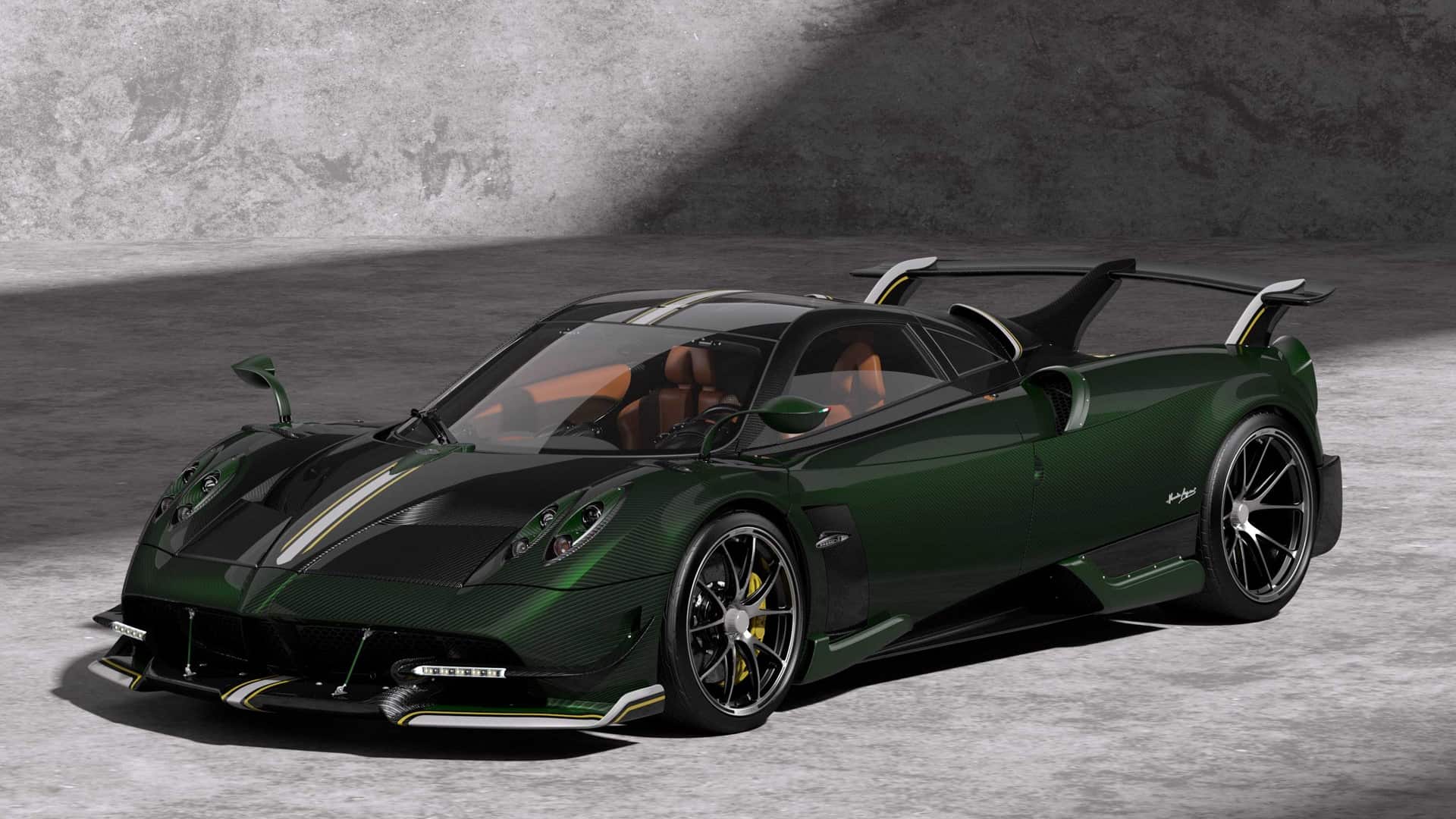
Pagani Automobili S.p.A. is an Italian manufacturer of performance-oriented vehicles and lightweight components. Founded in 1992 by Horacio Pagani and based in San Cesario sul Panaro, Italy, this company is well known for its outrageous designs and fast cars.
The man behind the company formerly managed Lamborghini’s composites department, which might explain the fact that Pagani Composite Research collaborated with Lamborghini on numerous projects, including the restyling of the Lamborghini Countach 25th Anniversary Edition.
By the late 1980s, Pagani began designing his own car, the C8 Project, and starting in 1991, Pagani established Modena Design to come up with unique designs, engineering solutions, and outrageous prototypes. The brand took its time, got Mercedes-Benz to agree and supply Pagani with V12 engines, and by 1999 the world was ready for the very first Pagani supercar – the Geneva Motor Show is where the Zonda C12 was revealed.
The mid-mounted DOHC engine might have benefitted from AMG’s expertise, but the car’s breathtaking overall design was inspired by jet fighters and the famous Sauber-Mercedes Silver Arrow Group C cars. On 30 June 2010, the Pagani Zonda R – a more upgraded and improved version – completed the Nürburgring in 6:47. The rest is history.
Pininfarina

The legendary Italian car design firm and coachbuilder Pininfarina S.p.A. is based in Cambiano, Turin, Italy. Founded by Battista “Pinin” Farina in 1930, this renowned design firm has been employed by a wide variety of automobile manufacturers over the years to imagine and design nothing but the coolest cars. Let’s ignore, for now, that the Mahindra Group acquired Pininfarina S.p.A. in 2015.
During the 1930s, the company was busy designing stylish bodies for Lancia, Alfa Romeo, and even Rolls-Royce. Farina quickly became known as the first coachbuilder to put bespoke bodies on “standard” cars, together with the aid of a new technique also known as unibody construction.
In 1939, World War II meant that the company had to adapt. As such, its 400 employees worked hard on creating ambulances and searchlight carriages. Following the war, Italy was banned from the 1946 Paris Motor Show.
However, Pinin Farina and his son Sergio were determined not to let that stop them. They drove an Alfa Romeo 6C 2500 S and a Lancia Aprilia cabriolet from Turin all the way to Paris and found a place just outside the exhibition where people could admire them.
In 1945, the Cisitalia 202 Coupé gave credit where credit was due, establishing a reputation for the brand and earning them a place in the Museum of Modern Arts. Little do people know that the company went on to develop bodies for various Cadillac models before standing in the world automotive spotlight again.
Ferrari, Alfa Romeo, Peugeot, Fiat, GM, Lancia, and Maserati, and more have benefitted from this shop’s expertise and innovations. Cool fact: Since the 1980s, the Pininfarina name has also been associated with high-speed trains, buses, trams, automated light rail cars, luxury yachts, and even private jets.
But they’ve finally decided to make their own supercar and the Pininfarina Battista is definitely a great tribute to the company’s founder and his legacy.
Polestar
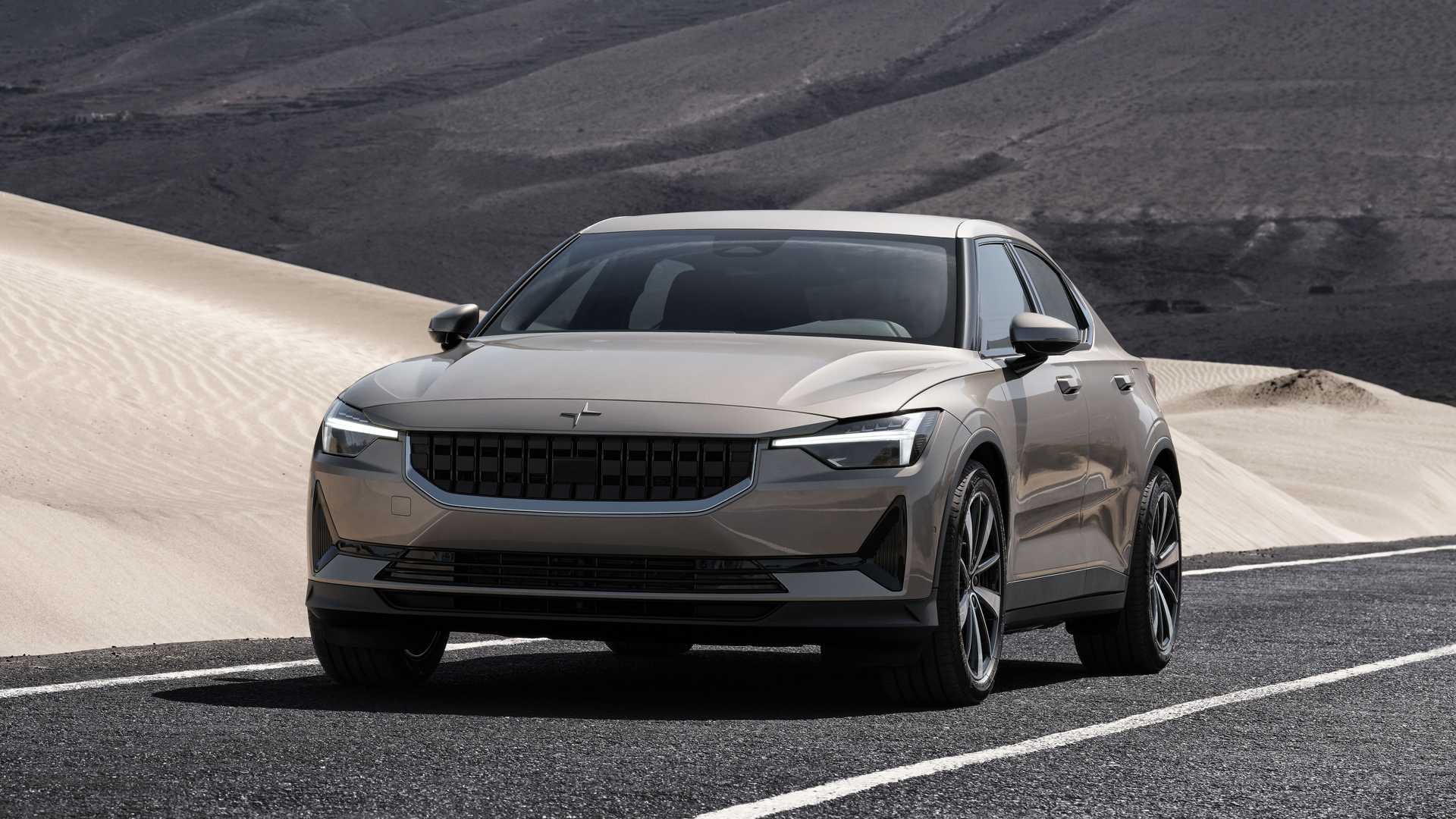
This is the official Volvo Cars performance company and electric car brand. Based in Gothenburg, Sweden, Polestar now develops electric performance cars, high-performance cars inspired by Volvo models, and will also gladly deliver technical and cosmetic improvements for the Volvo you have parked outside your home.
Established in 1996, Polestar was inspired by a Swedish racing team competing in Swedish Touring Car Championship. Following collaboration and extensive upgrade programs for its vehicles, Volvo eventually bought the company and turned it into a new Swedish car brand in July 2015.
Polestar is not joking about performance upgrades; no, Sir! The 2010 C30 Polestar Performance Concept Prototype bragged about 400 hp and 510 Nm of torque – impressive numbers even for our days.
The concept has inspired the Volvo S60 Polestar Concept, putting out 508 hp from a modified T6 engine. 0 to 100 km/h is dealt with in 3.9 seconds while the top speed stands at 300 km/h (190 mph). At Mazda Raceway Laguna Seca, this vehicle took down the Audi R8 and broke the lap record for four-door cars.
And the Polestar electric cars are something else. Just take a closer look at the Polestar 2 and tell us you don’t want one. I dare you!
PAL-V

Founded in 2008 by Robert Dingemanse and John Bakker, PAL-V is short for Personal Air and Land Vehicle. This innovative Dutch company is focused on the development of a compact two-person aircraft that’s able to travel on public roads.
Pilot and co-Founder John Bakker was looking to stray away from inconveniences of flying, such as dedicated take-off and landing locations. As such, he dreamed about a car that could take him airborne and also be able to drive him to his favorite fast food; meaning, you could land and drive off the airport immediately.
The name you are looking for is PAL-V Liberty. Built around a Carver One chassis, this machine was meant to test a refined tilting system, which in turn was optimized to result in the Dynamic Curve Stabilizer System. By, 2009 PAL-V was already successful in testing the tilting system with Prototype X1.
It took a lot of research and development, not to mention time and money, and by 2017 PAL-V started its marketing campaign. Nowadays, the PAL-V Liberty is now approved for road usage and is officially the world’s first commercial flying car. Feel free to look for it on European roads.
Panoz
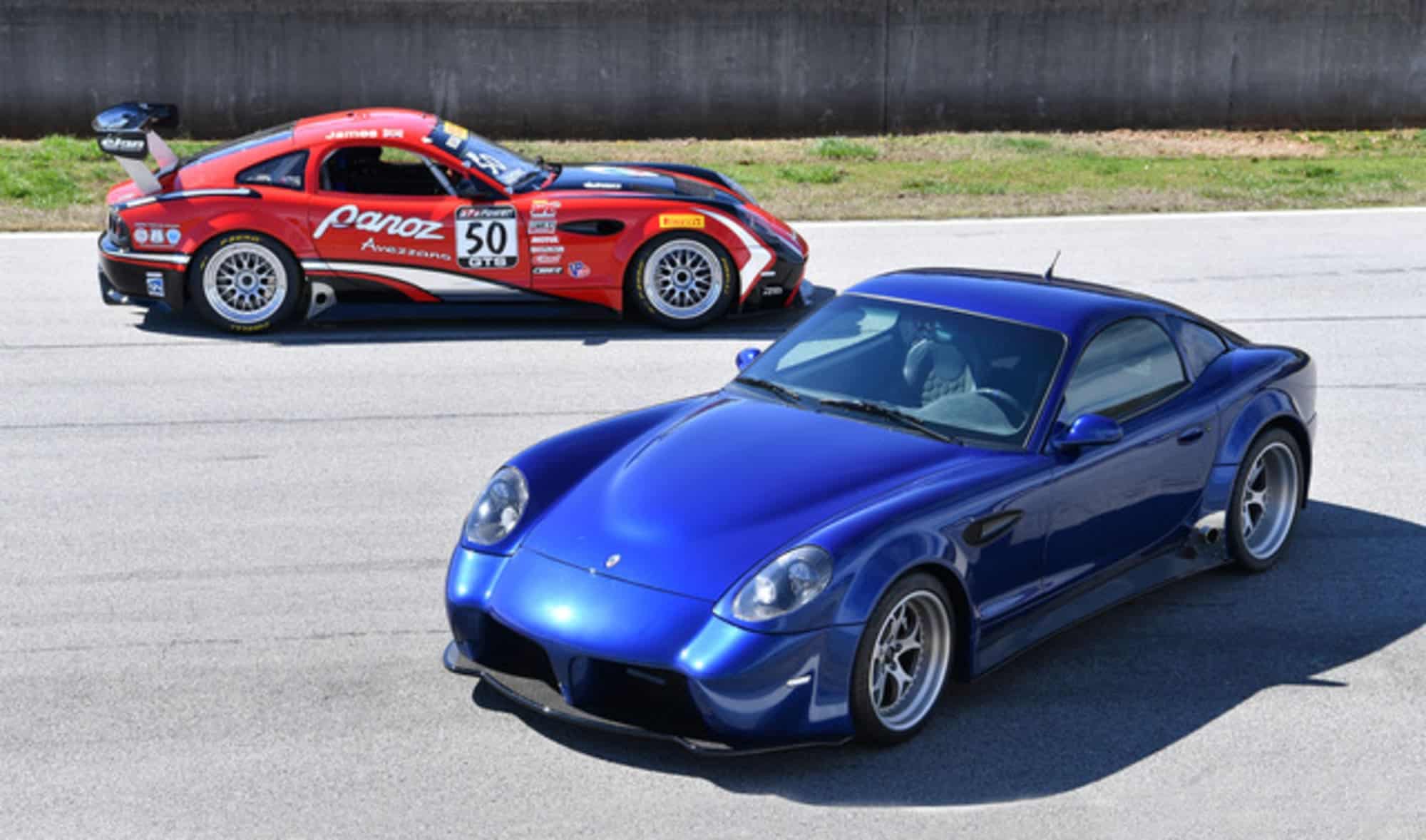
American manufacturer of sports cars, Panoz Auto Development was founded in 1989 by Dan Panoz. If you were not aware of this supercar brand until now, feel free to do a little research and check out the Panoz Roadster and AIV Roadster.
Since 1997, Panoz has been very focused on racing. Team Panoz Racing won the Manufacturer’s Championship in 2018. In addition to Le Mans series wins, an Esperante GTLM won the GT2 class at the 2006 24 Hours of Le Mans and the 2006 12 Hours of Sebring.
Panoz has been designing and manufacturing exclusive sports cars for a while now, and their race cars use some of the most advanced technologies. These guys mean business and their luxury hand-crafted vehicles have become quite popular as well. Each unit is rigorously tested before being handed over to the new owner.
The 1992 Panoz Roadster was built in the company’s small factory north of Atlanta, Georgia; by 1995 the Panoz AIV Roadster went into full production, in limited series of course. A few years later, the Esperante GTR-1 model was designed to be a street-legal version of the race car developed for the Le Mans endurance race. It had a front/mid-mounted American-made V8 and quickly drew in crowds.
Getting closer to our times, the Panoz Avezzano impressed everyone in the 2017 Pirelli World Challenge GTS Championship, where it won 6 times and gained 10 podium places, putting the brand name back into focus.
Perodua

The Perusahaan Otomobil Kedua Sendirian Berhad – or Perodua – is Malaysia’s largest car manufacturer, one big car brand you probably never heard of. Established in 1992, the brand launched its first car two years later, in the form of the Perodua Kancil.
Although initially Perodua was focused on vehicles of small sizes, recent years have seen the brand dedicated to developing a wider range of vehicles, thus overlapping market segments with Proton’s. For instance, the Perodua Myvi went head to head with the Proton Savvy.
Also worth mentioning is the fact that Perodua does not design or engineer its main components. Engines and transmissions are not manufactured in-house, with such tasks usually handled by Daihatsu – although, 2004 saw Perodua assembling the Toyota Avanza at its plant in Rawang.
Perodua’s high sales numbers have inspired a second car manufacturing plant and large investments over the following years. A private limited company, founded with the aim of bringing complete mobility to Malaysians through practical and high-value products, this car company is quite complete and its portfolio includes the body and paint repair as well as pre-owned vehicles.
Furthermore, Perodua is Malaysia’s first and biggest Energy-Efficient Vehicle (EEV) manufacturer. I doubt you knew that.
Polaris
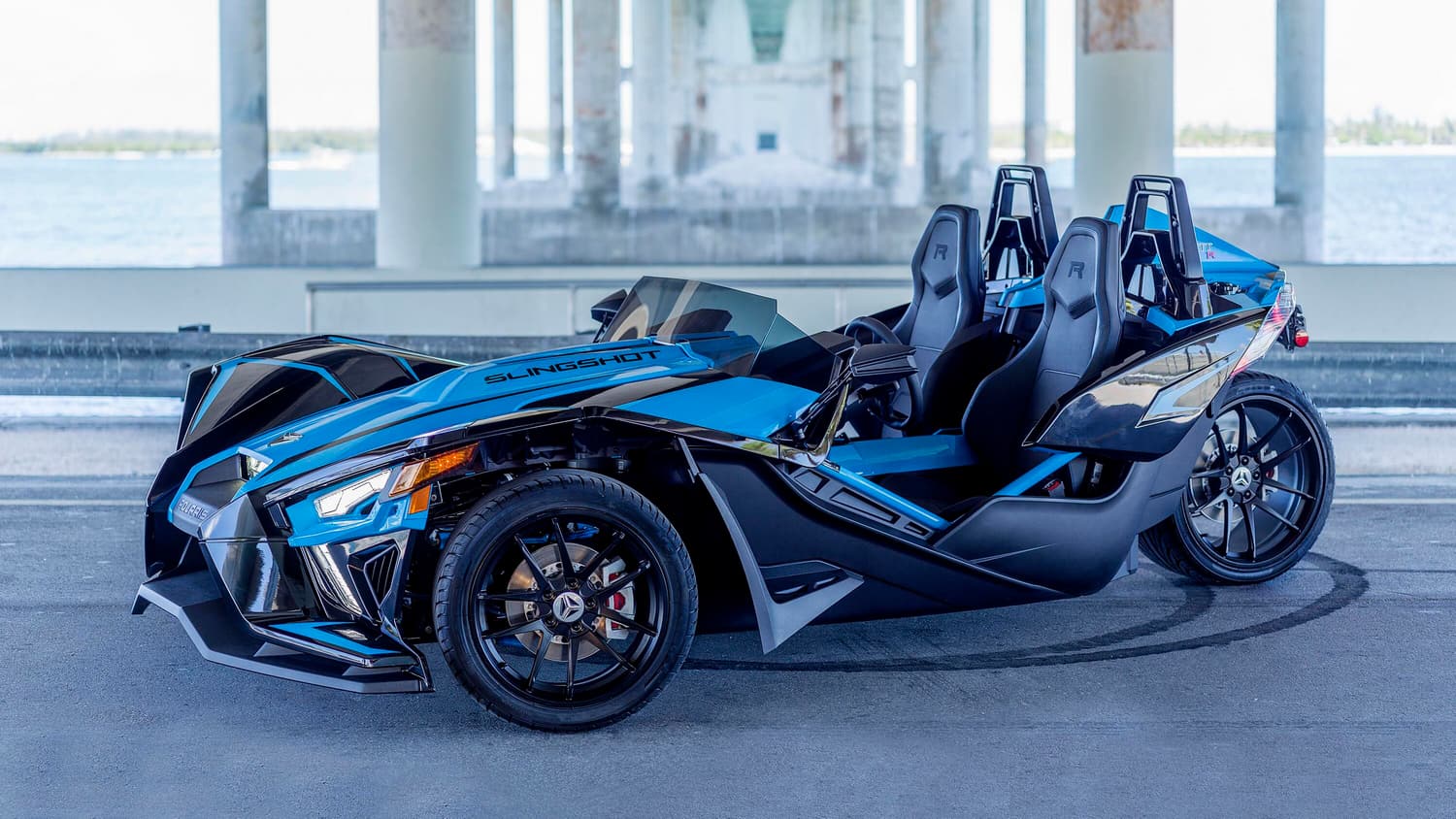
Modern times have seen Polaris Inc. become popular, although few of us knew the company has been around since 1954. This American manufacturer of motorcycles, snowmobiles, ATVs, and neighborhood electric vehicles is based in Roseau, Minnesota. To this day, the company still engineers and manufactures its products from the very same location.
It all started with David Johnson and a few innovative employees, who decided to create a vehicle able to easily travel through snow. This project was inspired by the idea of making remote hunting locations accessible.
The prototype featured a grain silo conveyor belt as a track, a Briggs and Stratton motor, and an old Chevy bumper instead of skis. Work continued, and a second and improved project was created – the Polaris Snow Traveler.
In 1956, the first Polaris production model rolled off the assembly line; it weighed in at 1,000 lb and traveled at around 20 mph. A good marketing move, to promote the new snowmobile and its reliability, was set up in 1960. A three-snowmobile, 1,200-mile trek across the Alaskan wilderness was enough to gain everyone’s attention, and the rest is history.
By 1985, Polaris had introduced the Scrambler ATC and Trail Boss often remembered as the first American-made production all-terrain vehicles. Later, in the early 1990s, Polaris revealed the Rocky Mountain King (RMK) to the world, and suddenly everyone wanted to take on mountain terrain.
The company manufactured motorcycles through its Victory Motorcycles subsidiary until January 2017, and then switched to Indian – either way, not a bad choice. More interesting, the company also produced personal watercraft for ten years, until calling it quits in 2004.
In 1995, the Polaris Magnum 425 4-stroke ATV was introduced, and with the addition of the “twin 700” snowmobile engine in 1997, Polaris went on to design and develop engines in-house. Their “Liberty” line can be seen on most of their models, these days. A partnership with Subaru has also come into play.
In October 2011, Polaris announced the decision to invest in Brammo, Inc., an electric vehicle company, in order to develop an electric motorcycle – enter the Brammo Enertia. Did we mention the three-wheeled Polaris Slingshot?
Proton

Malaysian automotive company Proton Holdings Berhad – or simply Proton – is focused on automobile design, manufacture, and distribution. Established in 1983, it was the single national badged car company at that time.
Based in Shah Alam, Selangor, Proton initially rolled out rebadged versions of Mitsubishi Motors (MMC) products, well into the 1990s. A few years later, in 2000, Proton released its very own car, called Waja, although the bonnet still hid a Mitsubishi-sourced engine.
Since that moment, Proton has produced various car models, although most of them were designed to reach Asian drivers. But did you know that Proton was the owner of Lotus Cars from 1996 to 2017? In December 2008, Proton and Mitsubishi joined forces once again, thus allowing Proton to rebadge the 2007 Mitsubishi Lancer for Malaysian drivers – that’s how the Proton Inspira was born.
But Proton had other surprises in the works. The 2010 Kuala Lumpur International Motor Show saw the arrival of the 1.6-liter CamPro CFE engine. The turbocharged inline-four petrol engine was designed to output 138 bhp (103 kW) and 205 Nm.
Proton unveiled their new logo in February 2016, and the same year saw the arrival of four new models in 2016 – Perdana, Persona, Saga, and Ertiga – with progress and innovation continuing to this day. Some may be displeased by the involvement of Chinese company Geely, but that is neither here nor there.
Puritalia
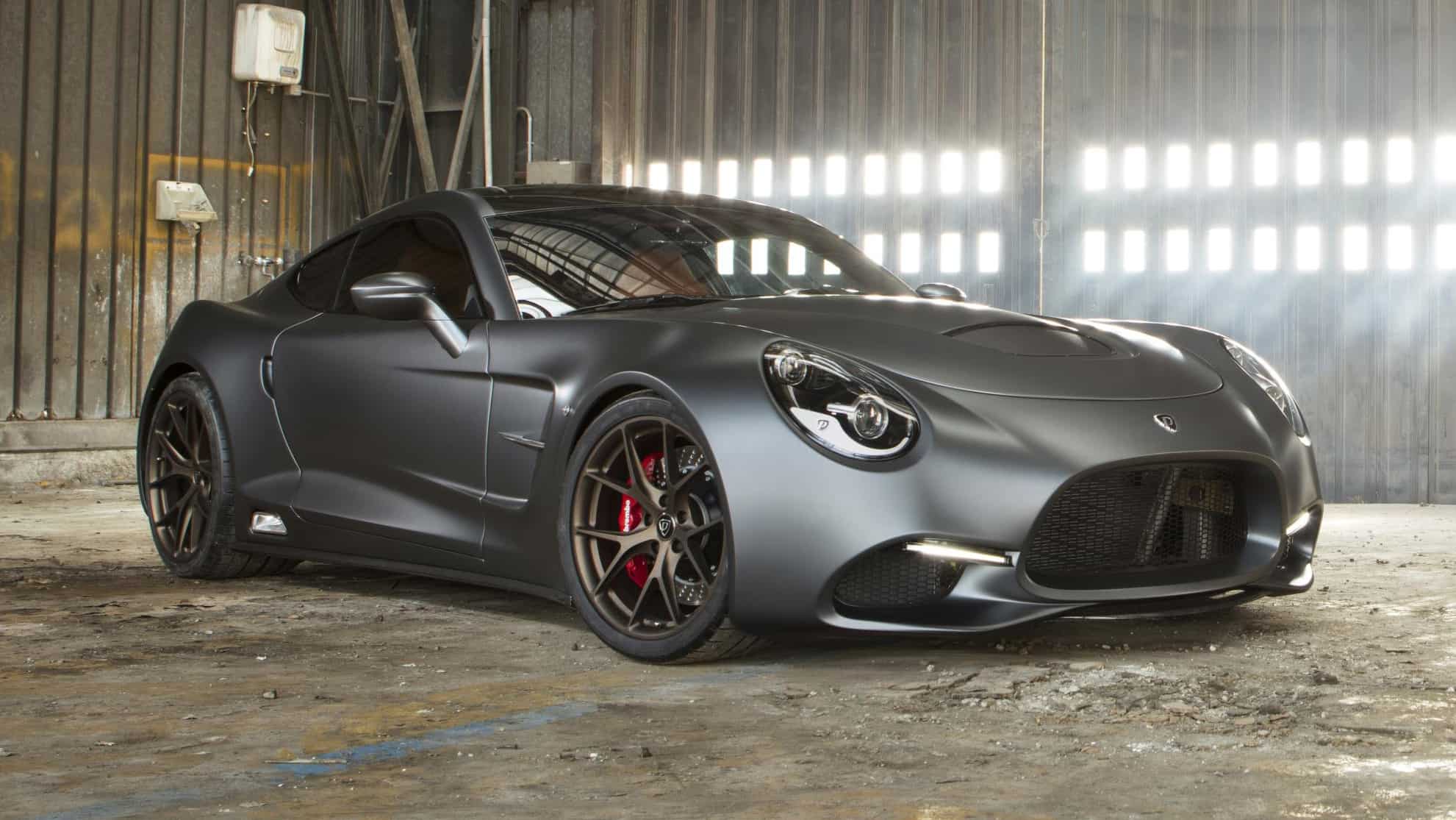
Puritalia Automobili was founded in 2010, in the hopes of bringing back the wonderful spirit of the Golden Years of Italian automobile design – yet nothing but state-of-the-art technologies and manufacturing solutions were to be used.
The petrol heads behind this company went all out and attempted to redesign the future of the supercars, trying to find the perfect balance between wonderfully classic design lines and modern-day equipment and tech. Puritalia plans to make exclusive sports cars, complemented by distinctive Italian design and incredible engine sounds.
Excited yet? You should be, as the company’s bespoke approach to customer preferences results in no two vehicles feeling the same. The Puritalia Berlinetta is a hybrid grand tourer introduced at the 2019 Geneva Motor Show – their very first model.
This modern evolution of the 427 Roadster, had a 5.0-liter double overhead camshaft V8 engine of Ford origins putting everything in motion. Complemented by a 2.9-liter twin-screw type supercharger, the aluminum-block engine developed 740 hp and 848 Nm of torque. It did not work by itself, however.
An axial-flow electric motor, courtesy of YASA Limited added an extra 212 hp and 370 Nm of torque. You do the math, but one thing’s for sure – this thing did not lack in power. Feel free to lookup more information on the company and, in the meantime, get some serious cash ready. I doubt you could retain yourselves from parking one of their projects in your driveway.
Praga
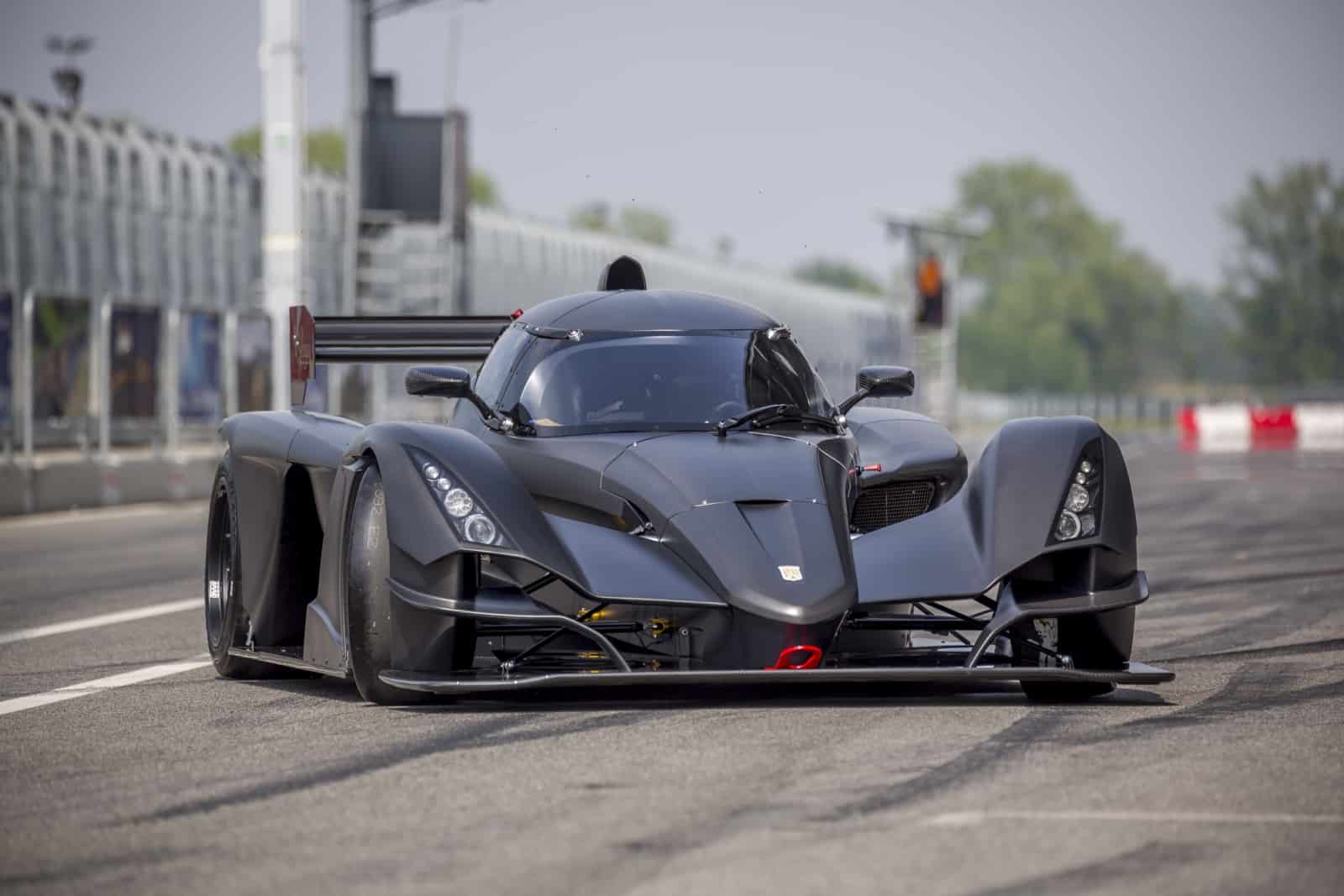
Prague, Czech Republic – the birthplace of Praga, a Czech company focused on automobiles, karts, road supersports, and planes. Did you know that ‘Praga’ is how Eastern Europeans actually pronounce the Czech Republic’s capital name?
Founded in 1907, the company developed the V3S, one of the best off-road trucks of its era, and the reason it was put to good use by the Czechoslovak Army. Aside from building its own vehicles, Praga also went on to supply engines and gearboxes for aircraft and tanks.
In 1929 Praga merged with ČKD, one of Czechoslovakia’s largest engineering companies. As a result, BD motorcycle was re-branded under the Praga marque and was fitted with an advanced 500cc four-stroke single-cylinder DOC engine. A few years later, the Praga BC motorcycle was introduced. However, by 1933 the brand was done with motorcycles.
After the ravages of the Second World War, the company resumed truck and bus construction, although passenger cars were also on the list. The nationalization of the company meant military efforts were also a possibility. As such, the M53/59 Praga self-propelled anti-aircraft gun was developed in the late 1950s. It was built around a Praga V3S 6 wheel drive truck chassis.
As time passed, the company entered the racing world with models such as Praga R4 or the Praga R1. A road-worthy version, Praga R1R, was revealed in 2016 and people went crazy over it. The R1T was the next best thing.
Prodrive

1984 was a good year – a new Van Halen album, a good novel title, yours truly being born. However, it was also the year David Richards founded a new automotive company based in Banbury, England, called Prodrive.
The British motorsport and advanced engineering group designs, builds, and races cars but not only under their own brand. They usually do this very demanding job for the likes of Aston Martin, Mini, and Volkswagen.
This very advanced technology division puts motorsport engineering to good use, for automotive OEMs, aerospace, defense, and various other sectors. Prodrive also has a specialist composite division where lightweight carbon composite CFRP and visual carbon components are being developed for supercars around the world.
The company also got involved with racing, by joining forces with the Subaru World Rally Team and helping out legends such as Colin McRae, Richard Burns, and Petter Solberg work their magic. However, the brand’s performance-oriented efforts continue to this day, with much success I might add.
They’ve also tried their hand at launching their own cars, with the Prodrive P2 being a decent hit, even though it wasn’t such a good looking car, and the Prodive Hunter just around the corner.
Peterbilt

Peterbilt is a name associated with a bold attitude, raw power, and the ability to move mountains from one part of the country to the other – at least that’s what Europeans think about Peterbilt trucks.
Founded in 1939, in Denton, Texas, the American-made company was focused on medium- and heavy-duty trucks. Shortly after being established, the company was already producing the Model 364 for the Armed Forces.
Following the worldwide military conflict, the company went on to continuously innovate and develop better and better trucks, with large contracts and numerous employees helping the brand name reach global fame. The oval logo will get you every time.
Nowadays, Peterbild’s Model 579EV has taken over the future of transportation. This fully electric truck will handle heavy loads, tough jobs and keep our environment green and our air clean. The 80 years-old company just keeps going, no matter what – as any decent truck should.
Pars Khodro

This right here is an Iranian automobile manufacturer but, more importantly, the first manufacturer of sport utility vehicles (SUVs) in Iran. Pars Khodro started production back in 1967 with the Aria and the Shahin, both vehicles were inspired by AMC’s 1966 Rambler American model. More interesting, the company also built Jeep CJ, Jeep Wagoneer, and Jeep Gladiator models under license – do you wonder where yours was manufactured?
By 1972, the Iranian brand had signed a deal with GM and formed General Motors Iran Ltd. The new company put the Opel Commodore into production, between 1974 and 1976, while 2.5- and 2.8-liter petrol engines put everything in motion.
After having developed a reputation for reliability problems, the Buick Skylark, Cadillac Seville, and Chevrolet Nova took over the production line. By 1981, the Iranian Revolution forced manufacture and the GM collaboration to come to a halt.
Even so, Pars Khodro was not planning on taking a break. The production of Nissan Patrol vehicles and pickups started immediately after and continued up to 2002 although, truth be told, 51 percent of Pars Khodro’s shares were purchased by SAIPA in 2000.
Paccar
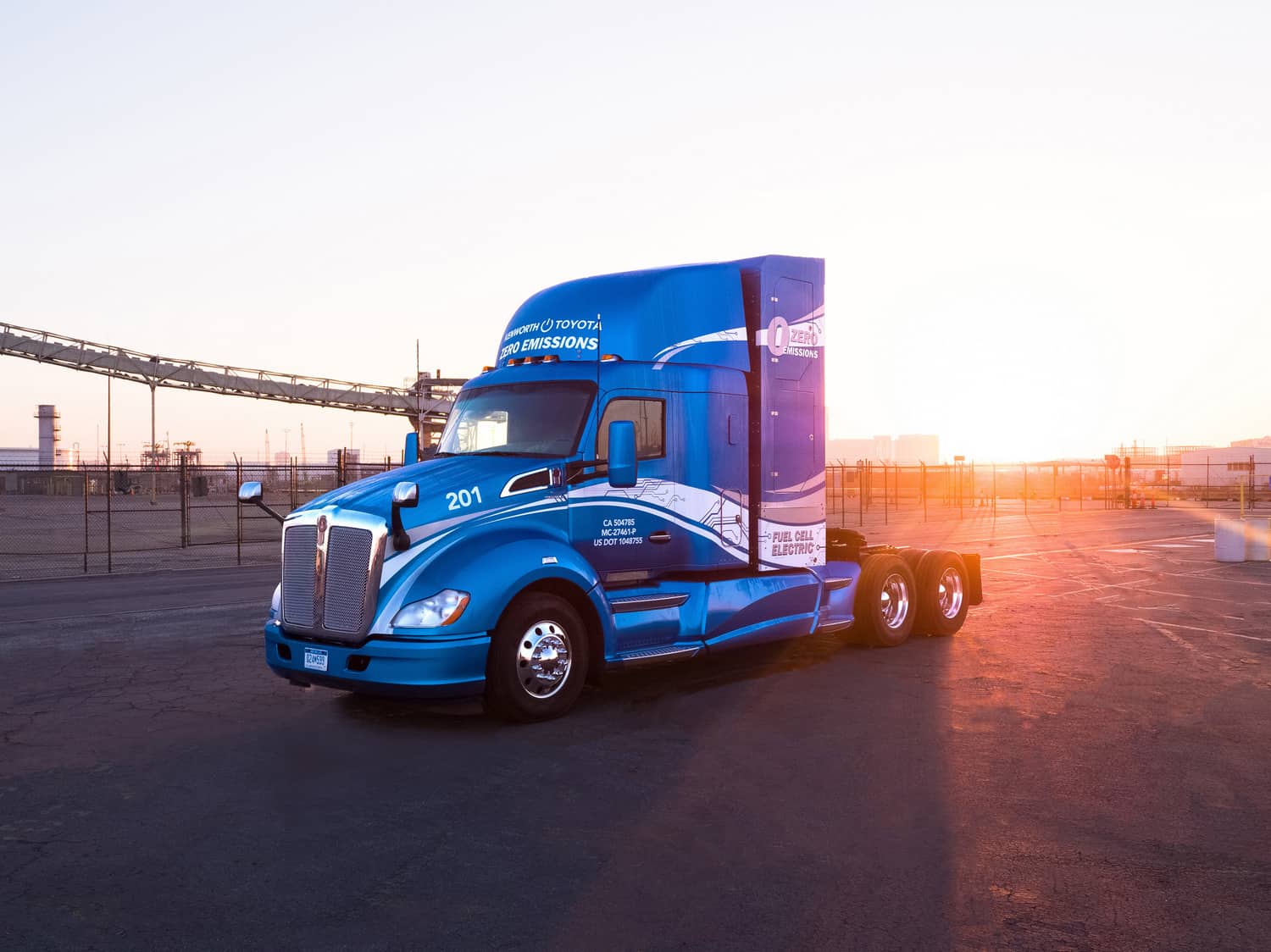
Bellevue, Washington, is home to Paccar since 1905. This American Fortune 500 company is one of the largest manufacturers of medium- and heavy-duty commercial vehicles around.
This company joined the heavy-duty truck segment in 1945 by acquiring Kenworth Motor Truck Company. Pacific Car and Foundry also helped with the brand’s manufacturing capabilities once the aforementioned Peterbilt Motors Company was purchased in 1958. In the very same year Paccar would also acquire Dart Truck Company, allowing the company to spread its wings onto the mining vehicles market. And so, a giant was born!
PACCAR now delivers highly praised trucks under the Kenworth, Peterbilt, Leyland Trucks, and DAF nameplates. The company is also known for developing diesel engines for its trucks, among other things. By 1967, the Dynacraft division was created with the purpose of providing belts, hoses, adapters, and other accessories for Kenworth and Peterbilt truck plants – in-house, so to speak.
European manufacturer DAF Trucks N.V. was acquired in 1996 and Leyland Trucks in 1998, transforming PACCAR into a colossal of truck manufacturing.
Packard
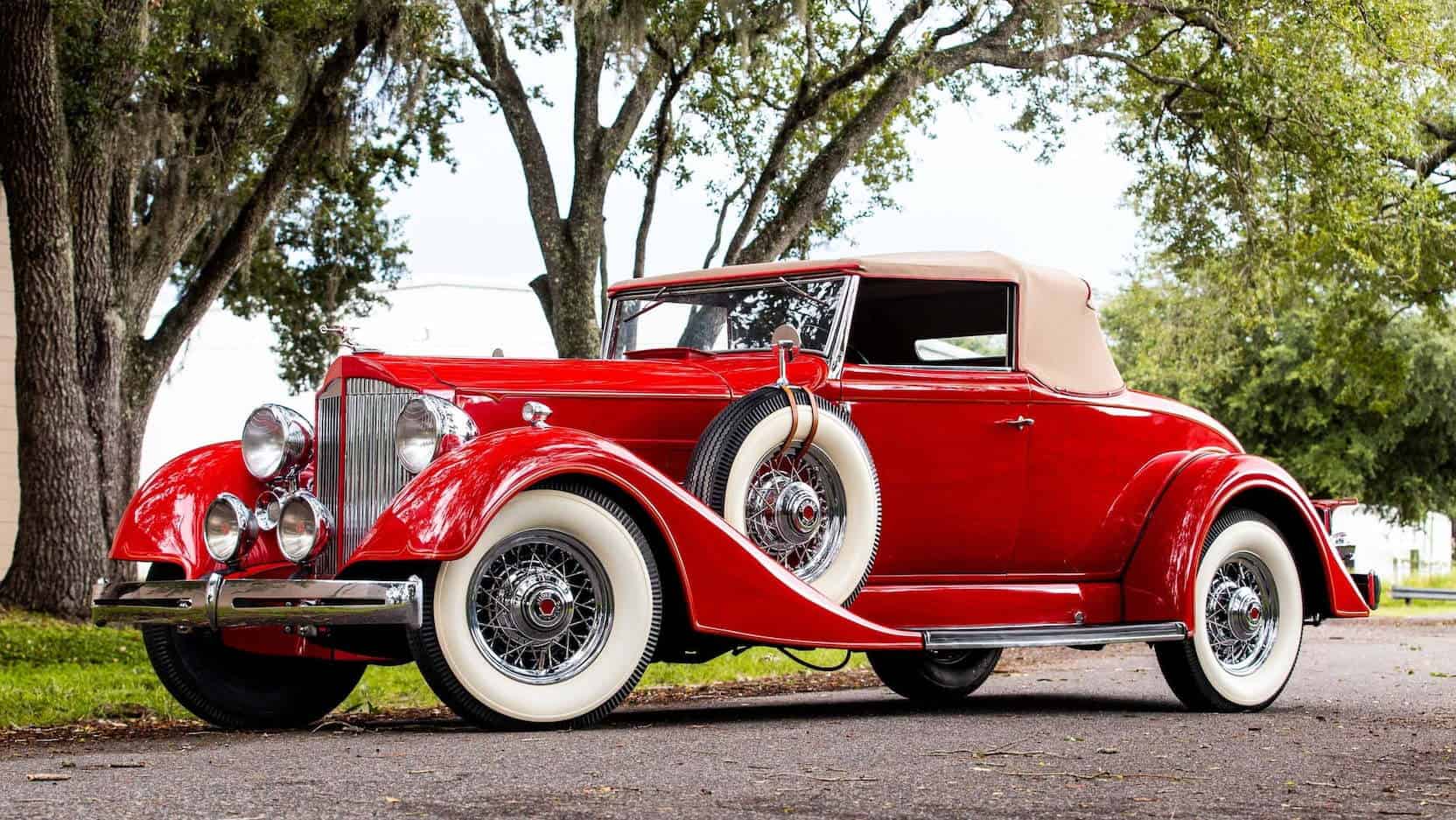
Yet again, Detroit, Michigan, leaves its mark on the automotive market. Although defunct since 1958, Packard was founded in 1899 by James Ward Packard, William Doud Packard, and George Lewis Weiss.
The American luxury automobile marque was rolling out vehicles as early as 1899, and that is no small feat, and kept doing so up until World War II. Afterward, the company focused on aircraft engines for a few years before it closed its doors.
A Packard car was prestigious, a social statement, and surviving examples are considered to be a rare treat – did we mention that all Packard engines were flathead engines? Packard vehicles featured innovations, such as modern steering wheels, air-conditioning, and one of the first production 12-cylinder engines.
By 1953, Packard bought Studebaker and tried to increase its presence on the luxury market but, as history would have it, this idea would not save the company from disappearing.
Panhard
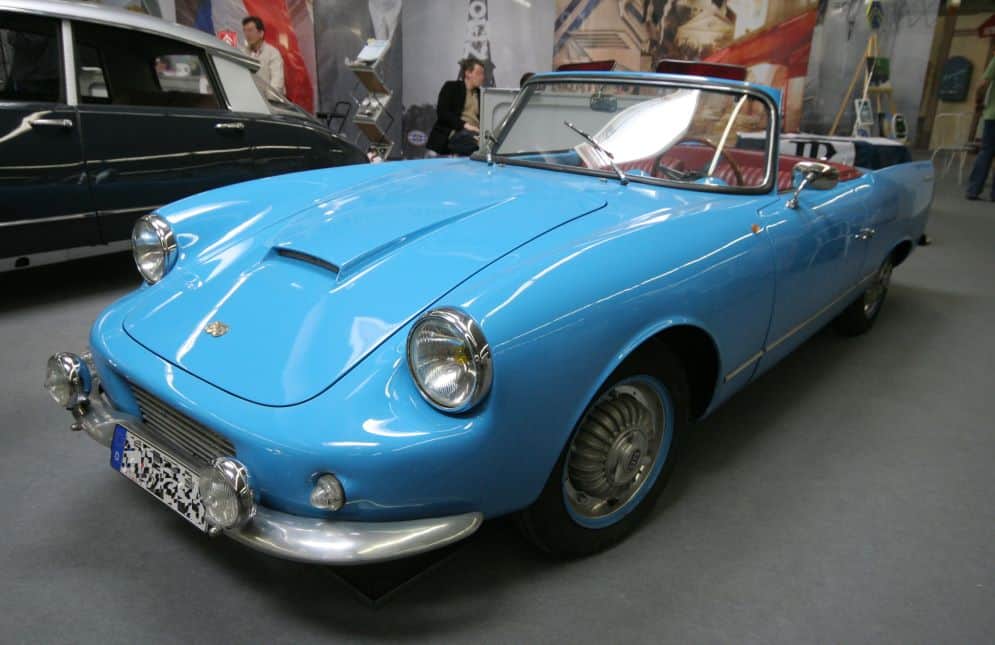
In 1891, René Panhard and Émile Levassor decided to establish this car brand, somewhere in Paris, France. Originally called Panhard et Levassor, for obvious reasons, the car manufacturing concern was one of the first makers of automobiles in Europe.
These vehicles set modern standards and marked the creation of automobiles, as we define them. Each was a one-off design, with a clutch pedal used to operate a chain-driven gearbox or featuring a front-mounted radiator.
An 1895 Panhard et Levassor is known to have featured the first modern transmission. Furthermore, the 1894 Paris–Rouen Rally is where people saw a 3 kW (4 hp) vehicle equipped with a steering wheel – yet another first.
Now owned by Renault Trucks Defense, following various administrative and ownership changes, Panhard remains to this day an important research and development division.
Pegaso
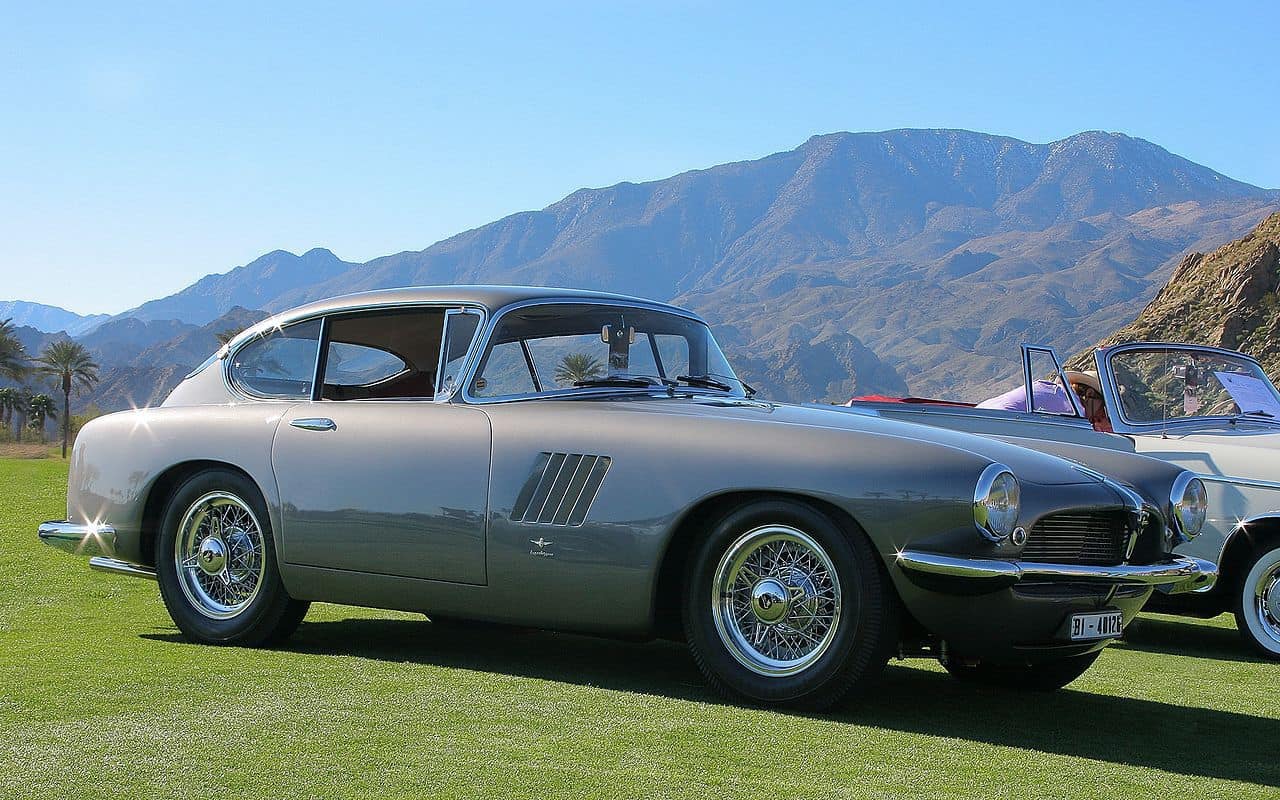
Although not around anymore, Pegaso was founded in 1946 and was based in Barcelona, Spain. By 1994 this Spanish manufacturer of trucks, omnibuses, tractors, and armored vehicles was gone.
Between 1946 and 1990, Pegaso had rolled out the factory gates over 350,000 vehicles, including a few lovely sports cars. Pegaso became one of the leading European industrial vehicle makers, with significant exports to both Europe and Latin America. A substantial contract to supply tactical trucks to the Egyptian Army was signed in the late 1970s and put their name on the global map.
In 1990, Iveco took over Pegaso and the name just disappeared. And so did most of the Pegaso ranges. Iveco continued to sell Pegaso-badged military trucks for a while after, but this was the end.
PGO

Gilles and Olivier Prevot began this story in 1985. Based in Saint-Christol-lès-Alès, PGO Automobiles is a French car manufacturer, focused on designing and developing exclusive series of sports cars.
Competing with Lotus, Wiesmann, Donkervoort, and Morgan for the attention of passionate drivers, this company promises individuality and style – something to be expected from the French. Initially, PGO manufactured classic car replicas, but soon after the world got its hands on the brand’s own designs.
The Speedster II was among the first PGO models, a two-seater sports car looking all retro while packing modern equipment. The 2008 Paris Motor Show saw the arrival of the Hemera model and thongs kept on becoming interesting after that with the Cévennes speedster unveiled quickly after.
Pierce-Arrow

A long, long time ago, on this very same planet, Pierce-Arrow was founded – it was the year 1901. George N. Pierce established this Buffalo-based car company, in the state of New York, which was meant to deliver luxury vehicles to anyone who could afford it.
Although the brand also worked their magic on commercial trucks, fire trucks, boats, camp trailers, motorcycles, and even bicycles – as busy as they were – the story had ended by 1938.
In 1903, the company produced a two-cylinder car, the Arrow. The next year, a larger, more luxurious car was designed for the upscale market, the Great Arrow. This became the company’s most successful product, in no small manner due to the durable, four-cylinder engine and the fact that the car won the Glidden Tour in 1905.
In 1909, U.S. President William Howard Taft ordered two Pierce-Arrows, making them the first official cars of the White House. That is a powerful statement. In 1914, Pierce-Arrow moved the headlights from a traditional placement at the radiator’s sides and fitted them inside flared housings in the front fenders of the car.
The Pierce-Arrow was a status symbol, which is to say that various Hollywood stars and celebrities owned a Pierce-Arrow Town Car. Furthermore, it might be interesting to know that royalties around the world had at least one Pierce-Arrow in their collection.
Plymouth

Does anyone else remember the iconic ‘Cuda model? Although it disappeared in 2001, Plymouth started off as a brand of automobiles way back in 1928 and worked from inside a shop in Auburn Hills, Michigan. The US-based manufacturer developed vehicles mainly for the North-American continent.
The first Plymouth automobile was introduced at Madison Square Garden on July 7, 1928. Although priced higher than the competition, Plymouth cars came packing standard goodies such as internal expanding hydraulic brakes or other cool features that rival companies charged extra for.
The original purpose of the Plymouth was to serve the lower end of the automobile market and ended up saving Chrysler during the Great Depression of the 1930s. For much of its life, Plymouth was one of the top-selling American automobile brands; it even ranked the second-most popular make of automobiles in the U.S. during the 1940s.
Over the years, the company was constantly hit by an economic crisis, fuel emissions restrictions, and so on; it ended up selling various rebranded vehicles, which is not a safe way to remain interesting on the market. By the 1990s, Plymouth had lost much of its identity, as its models continued to overlap in features and prices with its sister brands, Dodge and Eagle.
Only four models were sold under the Plymouth name – the Voyager/Grand Voyage, the Breeze, the Neon, and the Prowler sports car – with the year 2000 approaching. And with that, the name and its history vanished before our eyes
Premier

Premier Ltd. is a manufacturer of vehicles based in Mumbai, India. Although established in 1944, only three years later did the company manufacture the first Indian-made trucks and cars. The company became popular for its Premier Padmini, a vehicle that ruled the Indian car market during the 1970s and 80s.
Negotiations with Chrysler Corporation for licenses to build a Plymouth car and a Dodge truck ended successfully and the Indians got to work hard on Dodge, Plymouth, DeSoto, and Fargo vehicles. Premier also licensed and manufactured a version of the Fiat 1100 D – I doubt you knew that.
The company continued with producing licenses on its assembly lines, from various other big names in the automotive business. By 2004, Premier was building a small diesel-powered van called the Sigma, inspired by a 1980s Mitsubishi Varica design. Five years later, the Premier RiO compact SUV was revealed – a poorly built copy of Daihatsu’s 1998 Terios model.
You get the main idea, which is why you won’t feel surprised about the fact that by 2018 the company had filed for bankruptcy.
Final Words
There you have it, these are all the car brands starting with P that we could find. You have some legendary names that still rock today’s automotive world and a few companies that have left their mark on the car industry forever. Which one is your favorite? Which car that starts with P would you like to drive?

